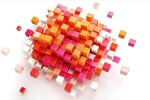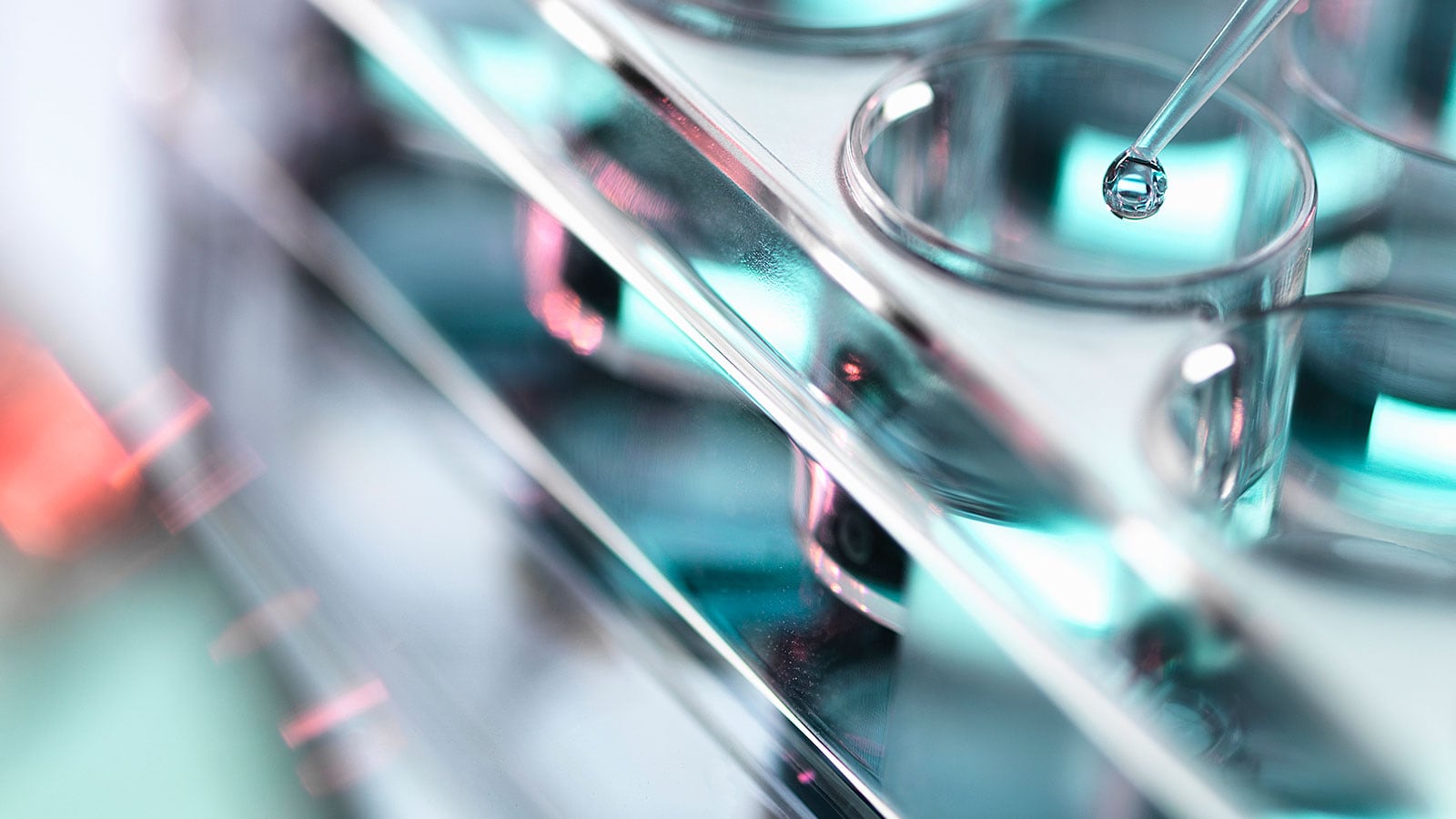The manufacturing of cell and gene therapies (CGTs) presents some unique challenges. Not only do CGTs require very specific (and costly) equipment and infrastructure, but many different stages of the manufacturing process are also inherently complex and expensive to execute. In this blog, the second in our series exploring CGTs, we look at some of the approaches – including strategic partnerships – that pharma companies should consider as they seek to scale manufacturing without compromising product quality.
Manufacturing CGTs demands highly specialised infrastructure and equipment
CGT is an entirely new class of treatments compared to biologics and chemicals. The manufacturing process still closely mirrors academic research. It involves open handling phases, manual labour and inefficient use of equipment that is repurposed rather than fit to the process (i.e. purification of AAV using chromatography instruments). Looking at the process, harvesting, purification, formulation, and fill and finish are critical steps and represent the biggest challenges due to the thermal, sterile, time and inherent sensitivity of the cells. In addition to manufacturing, there’s a need for multiple quality control testing (purity, identity, sterility and viability) with a number of different methods to control the product (e.g. translocation, off-target and transgene expression). Overall, there are many process and quality factors that lead to a high defect rate with significant manufacturing costs (up to US$100,000 per treatment).
Besides the equipment, manufacturing CGTs requires strictly controlled cleanrooms and robust cleaning systems to remove any remaining cell or viral particles. Making sure that these facilities meet the highest quality standards poses logistical and major financial challenges. The cost of establishing and maintaining such facilities is a major consideration. The decision on whether to invest in capital infrastructure is perhaps the most challenging and cost-prohibitive for CGT companies. These investments are large and have long-term implications for business operations.
In recent years, CGT therapeutic companies have invested between US$80 million and US$155 million to build and renovate GMP-compliant manufacturing facilities, which excludes annual operating costs and the incremental expenses to obtain CGMP certification.
Looking at the future, on the one hand, we see a focus on the standardisation of processes and the further development of automated manufacturing platforms. On the other hand, the technologies will continue to evolve and the products will become more and more complex (e.g. switchable, multi-targeting and armoured CAR-T cells) requiring constant agility and a delicate balance between these two trends.
The significant investment in facilities is an important barrier to entry for smaller pharmaceutical companies. What’s more, the lead time for setting up and validating these facilities adds to the overall timeline, delaying patient access to therapies. In this respect, CDMOs are evolving into end-to-end service providers, taking on a strategic partnership role with developers to ensure mutual success.
Scalability and batch-to-batch reproducibility can be a daunting task
To develop a strategy for scale-up/scale-out to meet commercial demands, developers and manufacturers must look carefully at the process and product attributes, as well as their geographic growth strategy.
For gene therapy, there is an ever-present risk of genetic shifts caused by multiple cell line passages leading to batch terminations. For autologous cell therapy, there is no classical approach for scale-up, as each batch of cells is manufactured for the individual patient. For allogeneic cell therapy, the donor variability impacts the process and adds complexity to the collection of the material (selection of apheresis centres and the screening of healthy donors). Using donor-free material like induced pluripotent stem cells can help decrease variability.
With autologous cell therapies, it isn’t possible to scale up unit operation. The process is one patient, one batch – which limits batch volume and the associated economies of scale at that level. The small volumes and larger number of batches force the replication of operations such as fluid movements, mixing, sampling and labelling for every batch. The major pain points are:
- patient-to-patient variability in the starting material,
- having multiple manufacturing spaces to increase throughput,
- variability in the overall yield of the final product.
Regulators need to understand how well developers know their product, its characteristics and its efficacy when increasing volume. A solid comparability strategy is key for comparing the initial and post-scale products. The lack of access to materials and talents, as well as unproven technologies/immature processes and standards are the top challenges for scalability and reproducibility when moving from early development to clinical phases and then achieving commercial scale.
Achieving scalability without compromising product quality remains one of the most critical challenges in CGT manufacturing and often leads to substantial financial losses. Manufacturers need to strike a balance between increasing batch sizes and maintaining consistency to reduce costs. There are multiple approaches, depending on the need and the specificity of the product. The implementation of automated closed systems can dramatically increase scale and productivity for CAR-T and therefore improve access to patients. Moving from adherence-based to suspension cell bioreactors can also help for gene therapy. In conclusion, improving both the input (i.e. starting materials and reagents) and the process can help manufacturers achieve commercial scale and decrease COGS.
Decentralisation of manufacturing reduces operational and logistical complexities while cutting costs
Decentralisation of manufacturing or moving from a single site to a multi-regional model is a concept that has gained traction in recent years. The idea is simple yet transformative: set up manufacturing facilities in diverse regions to meet localised demands. While this approach introduces challenges due to varying equipment and protocols across sites, it can result in significant cost savings. Some estimates suggest that decentralisation could reduce overall costs by 15% to 20%, equating to annual savings of US$100 million or more for a large pharmaceutical company.
Another way to meet local demand is manufacturing at point-of-care (PoC). This can reduce vein-to-vein lead time by bringing the production of the drug product at the treatment centre closer to the patient. However, it brings additional challenges for how developers can work with hospitals to ensure product quality and regulatory compliance with local authorities. Scaling commercial capacity and ensuring controls over hundreds of hospitals will be a significant pressure test exercise for leaders in the field. It will bring significant operational challenges and strategic considerations to design and execute a viable commercial business model across multiple sites and regions. While it’s mainly used for autologous cell therapy so far, questions remain as to whether it could and make sense to apply it to other forms of precision medicine (i.e. personalised mRNA vaccination).
- Decentralisation not only reduces manufacturing costs but also enhances supply chain resilience, reducing the risk of costly disruptions. But it requires a robust strategy for site selection, technology transfer and the harmonisation of quality standards. Collaborative efforts between governments, regulatory agencies and manufacturers can facilitate the implementation of decentralised manufacturing models. It’s essential for the adoption of manufacturing at PoC to establish a safe manufacturing structure within the healthcare facilities, to enable and utilise data and AI/ML for improving manufacturing processes and finally to form and mature a solid network of manufacturers, developers, academic and regulatory institutions.
- All decentralised manufacturing needs robust systems that are easy to transfer from a centralised process development and validation site to all the decentralised drug manufacturing sites. These systems should be closed, automated and flexible.
- Despite the clinical studies that are underway, someone needs to demonstrate a sustainable commercial business model for decentralised cell and gene therapy before the majority follows.
- The cell and gene therapy industry is rapidly evolving towards high volume and miniaturisation. This means that flexibility is needed for the development of the next generation of cell and gene therapy drugs.
Looking ahead
Looking ahead, the future of CGT manufacturing is poised for remarkable advancements. Decentralisation, advanced technology integration and collaborative efforts across stakeholders will continue to shape the industry. Implementing automation and digitalisation can reduce costs by up to 30%. Using data analytics and machine learning can optimise processes. Real-time verification of critical quality parameters through in-line analytics enhances product quality and yield while reducing production time.
Collaboration between regulatory bodies, pharmaceutical companies and research institutions will accelerate the development and manufacturing of CGTs. This collaborative approach not only addresses the challenges of time and cost but also ensures that innovative treatments reach patients in a timely and cost-effective manner.






